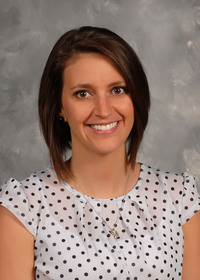Hydration Gel Bead Supplementation for Broiler Chicks
Getting chicks off to a good start early on is critical for maximizing their genetic potential and performance, ultimately increasing profit for growers. Chicks are most efficient at converting feed to growth when they are very young, so creating a comfortable environment that is conducive to chick movement is vital. Getting chicks to feed and water as soon as they arrive is the number one objective to help lessen mortality due to dehydration and increase body weight during their first week of life. One way to achieve this is through proper preparation and management of the house, starting before the chick arrives on the farm.
Another tool that could be used to boost early feed and water intake is the application of supplemental hydration gel beads (HGB) on top of the feed at chick placement. Research on the potential benefits of HGB supplementation is limited, which makes it a “guessing game” when determining if this tool is a worthwhile investment. To help quantify these benefits, a trial was conducted using supplemental HGB at broiler chick placement and two commercial-sized poultry research houses at Mississippi State University’s poultry research farm.
There are many supplemental HGB products on the market today that are enriched with various nutrients and gut health supplements. The water-based gel beads used in this trial were enriched with electrolytes and betaine to promote hydration (Figure 1).

All ingredients used in the manufacturing process are contaminant-free and sterile, and they have a highly visible green color, helping to attract chicks to the feed. The beads are designed to be used as a feed topper before chick placement (Figure 2). The beads used in this experiment were commercially produced in a facility approved by the U.S. Food and Drug Administration (FDA).

Two commercial-sized (42 feet by 400 feet) research houses were used for this experiment. The brood chamber of each house was subdivided into eight equal-sized research pens using migration fences. Each house contained four treatment pens supplemented with HGB (0.037 oz/chick; per manufacturer recommendation) and four control pens that did not receive any HGB supplements. HGB was measured out and placed on top of feed in chick tray’s and jumbo feed lids prior to chick placement. This amount was based on chick headcount and area of feed space. At placement, a baseline starting average chick weight was obtained from each of the eight pens within each house; birds were reweighed on day 7 to establish an ending average weight. Birds were walked twice daily, and mortality was recorded in each pen individually to determine percent mortality.
Although not deemed statistically different, trends were observed from the trial results for percentage 7-day mortality and 7-day body weights. There was a numerical improvement in 7-day mortality for chicks that received supplemental HGB (1.25 percent) compared to the control group, which was 1.58 percent (P=0.0715). Chicks receiving supplemental HGB at placement also showed numerical improvement in 7-day body weights of 6.03 oz compared to the control group of 5.96 oz (P=0.1119).
Although more research is needed, several anecdotal reports show that HGB products (such as the ones tested at the MSU poultry research farm) produce positive results when used in situations when stress levels are high, or chick quality is an issue. While overall bird performance needs to be documented, this preliminary data can be used to help determine if HGB supplementation is a worthwhile investment for growers to help get birds off to a good start. In addition to commercial producers, HGBs could be a benefit to backyard poultry enthusiasts as well as game bird producers.
Publication 4090 (POD-02-25)
By Jonathan Moon, Extension Instructor, Brody Hamm, Intermittent Worker, and Kelley Wamsley, PhD, Associate Professor, Poultry Science.
The Mississippi State University Extension Service is working to ensure all web content is accessible to all users. If you need assistance accessing any of our content, please email the webteam or call 662-325-2262.




